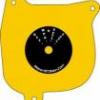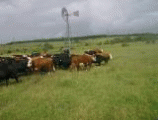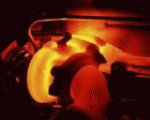Leaderboard
-
in all areas
- All areas
- Marker
- Events
- Event Comments
- Files
- File Comments
- File Reviews
- Images
- Image Comments
- Image Reviews
- Albums
- Album Comments
- Album Reviews
- Blog Entries
- Blog Comments
- Topics
- Posts
- Cummins Articles
- Cummins Article Comments
- Cummins Article Reviews
- Vendors
- Vendor Comments
- Vendor Reviews
- Ads
- Ad Comments
- Ad Reviews
- Policies
- Policy Comments
-
Custom Date
-
All time
December 14 2009 - July 22 2025
-
Year
July 22 2024 - July 22 2025
-
Month
June 22 2025 - July 22 2025
-
Week
July 15 2025 - July 22 2025
-
Today
July 22 2025
-
Custom Date
08/09/2014 - 08/09/2014
-
All time
-
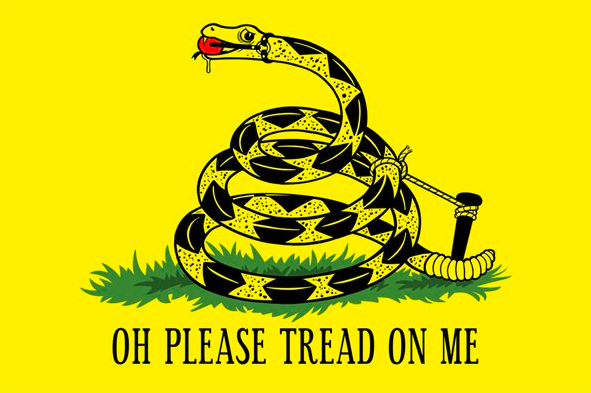
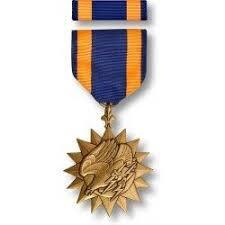
LiveOak
Yearly Subscription1Points867Posts
Popular Content
Showing content with the highest reputation on 08/09/2014 in all areas
-
VP44 PSG fuel cooler ideas
1 pointWithout deviation from the norm, progress is not possible- Frank Zappa.... Glad I'm not normal.... Ed1 point
-
Had a little fun wednesday night...
1 point
-
Had a little fun wednesday night...
Had some fun at the county fair pulling my truck the other night, never really had a chance at winning anything since they decided to run the work stock and 2.5 trucks together for some reason, but I had fun so thats all that matters! http://youtu.be/5Wabab4oTiU1 point
-
Motor Oil's cuss and discuss
1 pointAs a snot nose kid I ran what ever was on sale and could pay for. But about 40 years ago I started using Castrol in all the gassers I had, without any problems. But from watching the mega buck equipment at work running on any brand name oil that met the required specs, I noticed they would run 24/7, those that were put together right, for up to 2 years when they did a turn-a-round and replaced / repaired the unit as needed and ramped it up again. (I will mentioned we had to switch each pump for one hour each week to verify the spare was ready and on standby.) Not sure if it really matters what brand name oil you use, but more towards if the oil meets specs. I use full synthetic in everything now, and it meets specs, and still no issues.1 point
-
Motor Oil's cuss and discuss
1 pointI'll bet the guy in the ad had a lit camel in his mouth, another one behind his ear?? As for me, I'm a Conoco fleet 15w40 guy. I run it in EVERYTHING.. cars, pickups, tractors, 4 wheelers, motorcycle.. ..... I don't own anything such as my daughters' Dodge intrepid, with the 2.7 .... tiny little galleries are synthetic only.1 point
-
Motor Oil's cuss and discuss
1 pointI decided to try a different brand than I usually use when I did my last oil change. I swapped over to Schaeffers supreme for a try. I will say it got noticeably quieter after the change, and it seemed to stay cleaner (not instantly black) for a little longer. I intend to send a sample off to the lab after about 5k miles to see how its doing. I was hesitant to give it a try but they have a pretty good following and have been around in the oil biz for a minute.1 point
-
VP44 PSG fuel cooler ideas
1 pointOk another test run... This is after a run to town and left idling when I returned. Outside Temperature: 98*F Fuel tank Temperature: 85*F AirDog Filter Temperature: 85*F Stock Filter Housing Temperature: 98*F VP44 Inlet: 101*F VP44 Overflow: 130*F VP44 Case: 130*F After 10 minutes of being shut off... VP44 case 130*F. I'll try again tomorrow...1 point
-
Motor Oil's cuss and discuss
1 pointMyself I've been using Mobil products from the the local oil provider. Mobil 15w-40 in the diesel, Mobil 10w-30 in the gasoline stuff. I see things from a different perspective. As long as the oil meets or exceeds the requirement it should really matter on the brand name a whole lot. Like for our diesels they require CI-4 15w-40 for oil. Then today the current oil is CJ-4. Might have to switch up to lighter viscosity for the super cold northern states. So all the battles about synthetics and petroleum, brand names, etc. just doesn't mean a whole lot as long as the grade and viscosity is correct you should have much problems.1 point
-
Motor Oil's cuss and discuss
1 pointNope never saw any of those commercials but we also do not have any Phillips 66 stations in the area I am aware of either, plus I grew up on a farm where we only had 3 over the air stations until we got a big ol sat dish in the late 80's. I actually learned that trick from an old tech I worked with who was about to retire when I was just getting started. If you have black diesel engine oil and or exhaust soot that doesn't wash off with any soap the detergents in engine oil always did the trick.1 point
-
VP44 PSG fuel cooler ideas
1 pointWell since the diesel truck is out I might take it to work tomorrow and do some sampling of numbers for the site.1 point
-
VP44 PSG fuel cooler ideas
1 pointFuel heater is not controlled by VP44 fuel temp sensor nor the IAT. It's thermostatically controlled within the fuel filter housing. From the FSM... FUEL HEATER DESCRIPTION The fuel heater assembly is located on the side of the fuel filter housing (Fig. 9). The heater/element assembly is equipped with a temperature sensor (thermostat) that senses fuel temperature. This sensor is attached to the fuel heater/element assembly. OPERATION The fuel heater is used to prevent diesel fuel from waxing during cold weather operation. When the temperature is below 45 Ϯ8 degrees F, the temperature sensor allows current to flow to the heater element warming the fuel. When the temperature is above 75 Ϯ8 degrees F, the sensor stops current flow to the heater element. Battery voltage to operate the fuel heater element is supplied from the ignition switch and through the fuel heater relay. Also refer to Fuel Heater Relay. The fuel heater element and fuel heater relay are not computer controlled. The heater element operates on 12 volts, 300 watts at 0 degrees F.1 point
-
VP44 PSG fuel cooler ideas
1 pointNo you wouldnt because the fuel heater wont start "heating" fuel until it recognizes 45* F and it turns off at 75* F. Unless this fuel temp is being read inside the VP and not at the fuel filter housing.....1 point
-
VP44 PSG fuel cooler ideas
1 pointUnless you disable the fuel filter canister fuel heater or bypass it, you would be heating and cooling the fuel at the same time.1 point
-
VP44 PSG fuel cooler ideas
1 pointMike, I agree as I dont think mounting any cooler in a vulnerable location is a good idea either. And it seems mounting it up front and away from any drivetrain secondary heat interference would be the most logical since were after fuel temps at around 100* at the highest. I'm really serious about this guys..... I've been delving into the subject and I'm amazed at the information I've run across so far. Diesel fuel coolers are ANYTHING but uncommon. Its seemingly more uncommon to NOT have them but yet we see throughout the years that OEM is always cutting corners so if they can get around something which "may" not be needed then your vehicle will come without whatever device that may be. And the reasons for the diesel fuel coolers is always in regards to injection pump reliability.....but then tends to take a turn and spawn into a discussion about the density of fuel and HP and fuel mileage. And another very interesting subject which I found resulting in looking for coolers was algae..... Just as we regularly talk about oil "cokeing" in the turbo bearing from excessive heat, there is a situation called "asphalting" the fuel whereby diesel fuel is over heated and literally cooked to the point of thermal separation which results in a black tar like substance that’s prone to collect in the fuel tanks and fuel filters…..which is unknowingly categorized as algae from water and debris contaminants. A topic more discussed in class 8 type trucks but apparently or potentially a plaguing problem slipping under the radar for lighter duty diesel forums. We all know how hot the fuel can get in these injection systems so it must be something the diesel engine industry is aware of since as I mentioned before, the number of diesel engines with a fuel cooler is higher than those without. And in regards to "where" to place the cooler..... Well after the tidbit of research I've done, the return line is the general location based on trying to reduce the fuel temp before its dumped into the fuel tank, but there is plenty who mounted theirs on the inlet side before the injection pumps. And since I'm after maximum fuel heat dissipation just before the VP, I think mounting a tranny cooler with an electric fan as close to the VP as possible yet remaining in front of the radiator, is where I want to do this. That said, I may also place a secondary smaller less BTU rated flat cooler on the return line side mounted to the frame and up away from debris. Just to offer some additional offsetting of heat coming off the VP and head line as it flows back to the fuel tank. Remember, the fuel module has both the inlet and return line dumping directly side by side into the basket which means the hot return fuel is most likely being sucked right back up into the supply line. Keeping fuel in the tank at all times is the only way to combat this as sloshing fuel should counter affect but you can see under high fuel demand where this would be a problem. That is unless you have fuel coolers….. I'm also wanting to install a couple temp gauges via two 1/8” port fittings, maybe a dual temp gauge from Westach, so I can watch the supply and return line temps and see whats going on while driving. Like I have time to watch more gauges….. The only problem is I'm running out of (ran out of) places to mount gauges and I dont want to clutter up the cab with silly gauges mounted in various obnoxious manners for sake of research. Again guys, if you think this is a waste of time, do a few various and simple Google searches for things like diesel fuel coolers and you’ll find a plethora of applications and discussions. Its not a very “knowledgeable” topic as people tend to overlook the true reasons for the purpose but nonetheless, when you run across the guys who understand whats going on then the lights bulbs start illuminating and you realize that this is something these VP truck MUST have…..1 point


